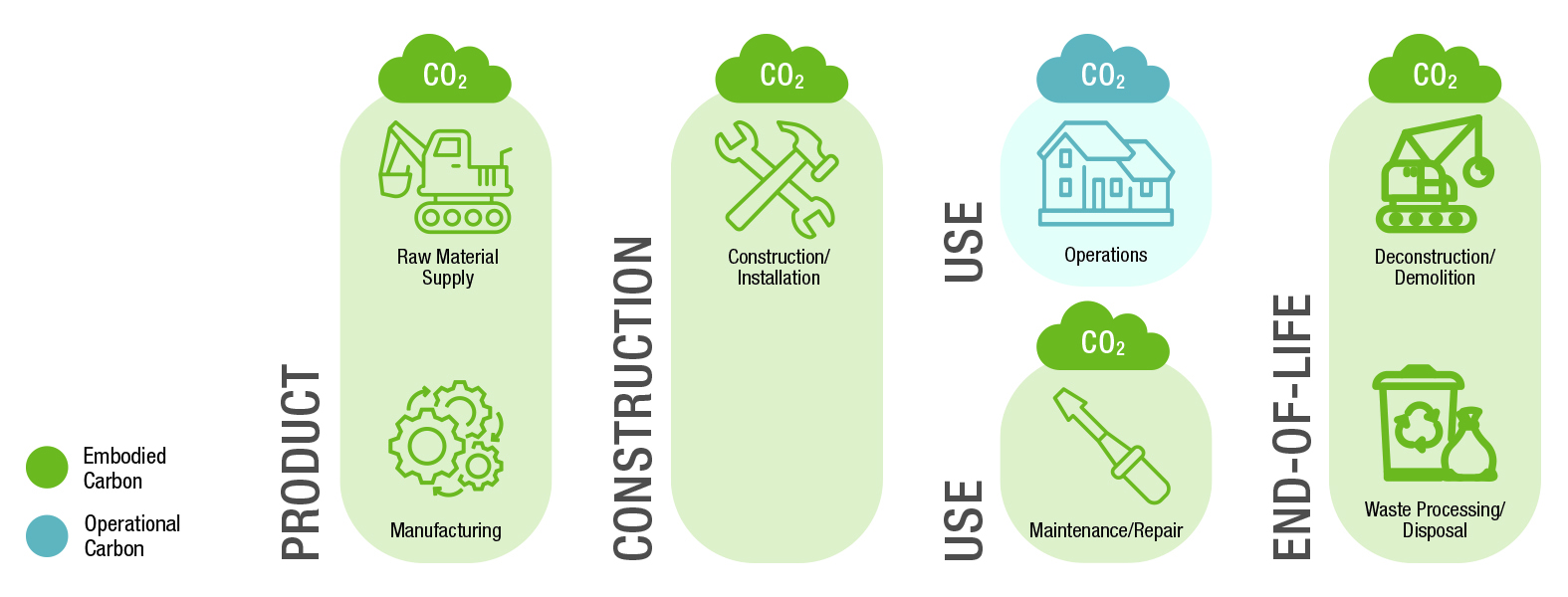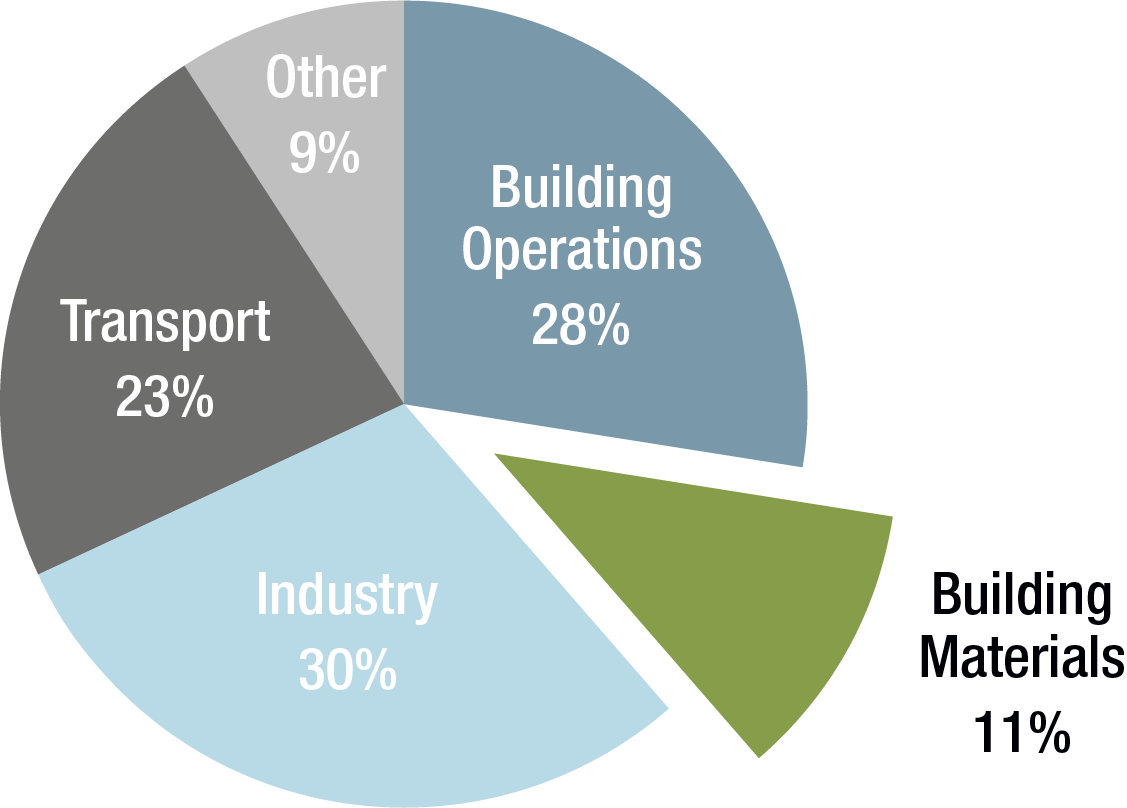What Is Embodied Carbon?
Embodied carbon refers to the greenhouse gas emissions arising from the manufacturing, transportation, installation, maintenance, and disposal of building materials. In contrast, operational carbon refers to the greenhouse gas emissions due to building energy consumption.
In order to quantify greenhouse gas emissions and their potential effects on climate change, scientists use a method called life cycle assessment (LCA) to track the emissions produced over the full life cycle of a product or process. These emissions are converted into metrics that reflect their potential effects on the environment. One of these metrics is global warming potential (GWP), which is quantified in kilograms of CO2 equivalent (kg CO2 e). This quantity is also commonly referred to as a carbon footprint.

What You Can Do
Selecting materials that reduce embodied carbon is a key step in limiting the impact that the building industry has on the environment.
We simplified the decision-making process through a diverse portfolio of low-embodied-carbon solutions and verified material transparency.
Lowering Embodied Carbon Just Got Simpler
Embodied Carbon In The Built Environment

The building industry accounts for nearly 40% of global greenhouse gas (GHG) emissions, with 11% coming from building materials alone. A building’s embodied carbon is tied to the products and materials used during construction, and embodied carbon is locked in once the construction is complete.
According to Architecture 2030, to avoid triggering irreversible climate change the building sector must reduce embodied carbon emissions by 65% by 2030, and to zero by 2040*.
We have compiled a list of ways to limit embodied carbon as we move forward in this journey together.

Resources
Brochures
Case Studies
Graphic: Key Life Cycles Stages of a Building | Carbon Leadship Forum (2020)
Pie Chart: CO2 Emissions | Carbon Leadership Forum (2020)
* Architecture 2030